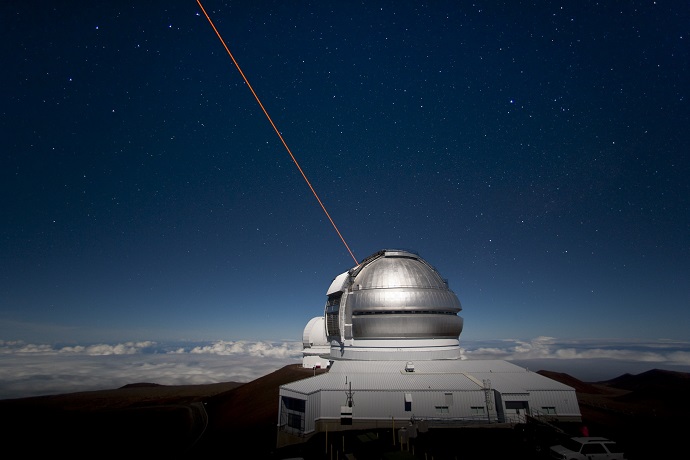18 September 2014
A supermassive black hole discovered in an ultracompact dwarf galaxy has prompted researchers to question if similar massive light-sucking objects may be far more common than previously believed.
The University of Queensland’s Associate Professor Holger Baumgardt and researchers at the University of Utah contributed to an international study of a black hole in the dwarf galaxy known as M60-UCD1, published in the journal Nature this week.
Black holes are collapsed stars with such strong gravity that even light is pulled into them.
“Many galaxies are thought to have supermassive black holes in their centres, with masses of at least one million times that of our sun, but M60-UCD1’s black hole has a mass equal to 21 million suns,” Dr Baumgardt said.
Dr Baumgardt said studying the energy and gravity of black holes revealed new knowledge about the formation of galaxies and the universe, and improved the accuracy of technologies such as advanced global positioning satellites (GPS).
“The Milky Way’s black hole has a mass of four million suns but this is still less than 0.01 percent of the Milky Way’s total mass,” he said.
“In comparison, M60-UCD1’s black hole is five times bigger and makes up a stunning 15 percent of the small galaxy’s total mass of 140 million suns.
“M60-UCD1 is the smallest and lightest object we know of that has a supermassive black hole, and it’s also one of the most black hole-dominated known galaxies.
“Our research suggests that many other ultracompact dwarf galaxies are likely to contain supermassive black holes, and that these dwarf galaxies may be the stripped remnants of larger galaxies that were torn apart during collisions with other galaxies,” Dr Baumgardt said.
The astronomers discovered M60-UCD1’s black hole using the Gemini North eight metre optical-and-infrared telescope on Hawaii’s Mauna Kea and photos taken by the Hubble Space Telescope.
They measured the speed and motion of stars in orbit around M60-UCD1 to estimate its mass, and discovered the galaxy contained more mass than would be expected from the amount of starlight it emits.
The stars at the centre of M60-UCD1 moved at about 370,000 km/h – faster than stars would be expected to move without the black hole.
To explain how a black hole so big could be made in an object so small, the researchers concluded that M60-UCD1 was once a very big galaxy with 10 billion stars in it, before colliding with an even larger galaxy, M60, and becoming part of that galaxy.
M60 is one the largest galaxies in the local universe.
Dr Baumgardt produced a video simulation (http://vimeo.com/105370891) to demonstrate what could have occurred there about 10 billion years ago.
The research team observed that M60 is pulling in another galaxy, named NGC4647.
M60 is about 25 times heavier than NGC4647.
The international study was funded by the US National Science Foundation, the German Research Foundation and the Gemini Observatory partnership, which includes the NSF and scientific agencies in Australia, Canada, Chile, Brazil and Argentina.
For more info on this story see The Conversation.
Formation of Dwarf Galaxy M60-UCD1 from The University of Utah on Vimeo.















